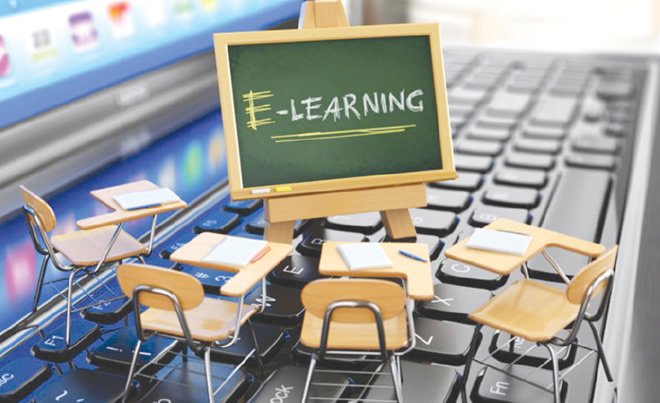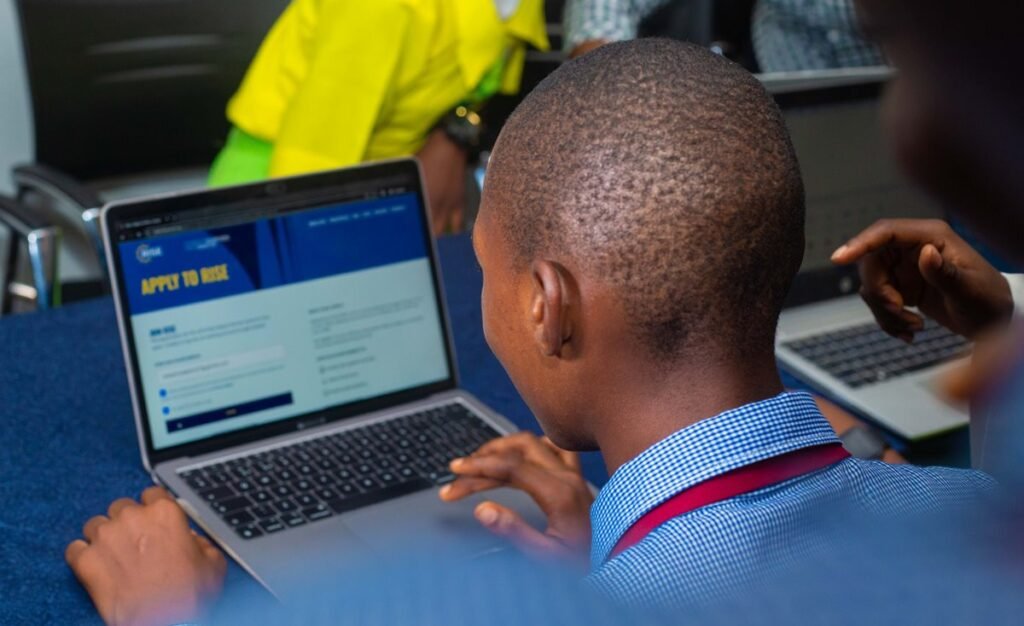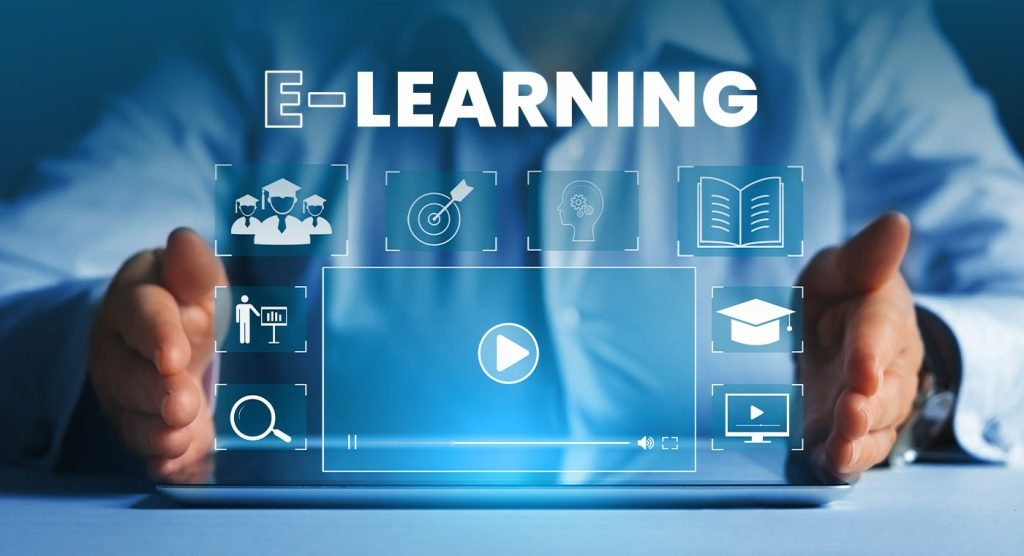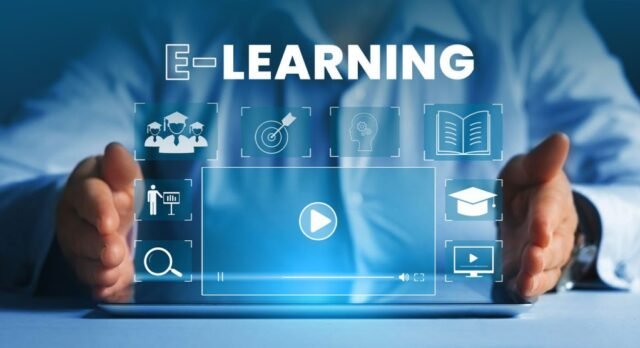In a time where technology is reshaping every facet of life, the e-learning sector stands out as one of the fastest-growing. Recent market intelligence predicts that the global e-learning market will exceed US$1.15 trillion by 2030, driven especially by innovations in artificial intelligence (AI). This projection is more than just a number—it signals a deep transformation in how we teach, learn, and access education.
What this means for educators, learners, governments, and tech businesses is that AI-powered learning solutions are no longer optional but central to future-readiness. In Nigeria, where internet penetration is increasing and smartphones are becoming ubiquitous, the shift towards AI in education presents both massive opportunities and serious challenges.
Table of Contents

What’s Causing This Explosive Growth?
Several trends are converging to propel the e-learning market past that US$1.15 trillion mark by 2030.
1. AI-Driven Personalisation
Learners no longer want one-size-fits-all. AI is enabling tailored learning paths, adaptive quizzes, classroom simulations, and real-time feedback. Systems can now adjust to a student’s pace, style, and even mood—boosting engagement and outcomes. For many, this is the most compelling benefit.
2. Broader Access & Connectivity
With falling prices for internet service, increasing availability of mobile broadband, and expansion of data infrastructure, many more students in remote or underserved areas can access high-quality content. In places like rural Nigeria, even modest improvements in connectivity can significantly raise participation in e-learning.
3. Blended & Hybrid Learning Models
COVID-19 hastened the adoption of remote learning, but the trend has matured. Schools and universities are combining online and face-to-face learning. AI tools are helping track attendance, analyse performance, and maintain continuity when disruptions occur, making hybrid models more robust and scalable.
4. Investment & EdTech Innovation
Investors are pouring money into edtech startups. New platforms are integrating AI, virtual reality (VR), augmented reality (AR), and gamification. Governments and private sectors recognise education as a strategic investment—not just social welfare—and are funding infrastructure, teacher training, and content development.
These factors are creating a feedback loop: better tools attract more users, more users justify higher investment, and higher investment drives more innovation.
Implications for Nigeria: Opportunities and Obstacles
As the global e-learning market heads toward the US$1.15 trillion threshold, Nigeria stands at a crossroads. The potential gains are huge—but so are the hurdles.
Opportunities
- Expanding Reach of Learning: AI can help overcome teacher shortages, especially in remote states. Automated grading, virtual tutors, and intelligent content delivery mean access to quality education even where human teachers are scarce.
- Skilling & Workforce Development: Nigeria’s youthful population (many entering the workforce annually) needs modern skills. AI-powered platforms can deliver vocational and digital skills training more affordably and quickly than traditional institutions.
- EdTech Start-up Boom: Local tech entrepreneurs are well placed to build tools adapted for Nigerian conditions—local languages, intermittent power, spotty connectivity. With growing investor interest in African markets, Nigerian edtechs could tap into foreign capital.
Obstacles
- Infrastructure Gaps: Consistent power supply, strong internet connectivity, and access to devices (smartphones, tablets) remain inconsistent in many regions. Without reliable infrastructure, AI systems cannot perform well.
- Cost Barriers: While the cost of technologies falls, the cost of deployment (licensing, data, training) can be high. For many students and institutions, affordability will be a limiting factor.
- Teacher Training & Resistance: Educators must adapt to new pedagogies. Some may resist change or lack digital literacy. Universities and schools in Nigeria will need to invest heavily in upskilling teachers.
- Regulation, Data Privacy & Quality Control: As AI tools collect more learner data, issues around privacy, content quality and bias demand attention. Regulatory frameworks are still weak in many African countries, including Nigeria.

What Needs to Be Done to Harness the AI-Powered E-Learning Boom
To ensure Nigeria (and similarly placed countries) benefit from the projected e-learning market explosion, a coordinated strategy is needed—one that balances innovation with oversight, access with quality.
Policy & Government Action
Federal and state governments must prioritise digital-education policy: funding for broadband, incentives for edtech, subsidies or tax reliefs for schools adopting tech. Uniform standards for content and data protection will build trust.
Public-Private Partnerships
Collaborations between tech companies, universities, NGOs, and governments can reduce costs, expand reach, and improve relevance. For example, edtech companies could partner with telecom providers to bundle data with educational content affordably.
Focus on Localisation
Solutions must be adapted to local languages, cultural contexts, and learning environments. Content designed for Lagos may not be effective in the Niger Delta or the North. Also, offline or low-bandwidth modes should be built into platforms to reach areas where connectivity is patchy.
Capacity Building
Teachers, administrators, and students all need training. This includes digital skills, AI literacy, and awareness of both the potentials and pitfalls of technology. Universities must include AI/edtech training in teacher education programmes.
Ensuring Equity & Inclusivity
Particular attention must be paid to girls, rural populations, students with disabilities, and communities with low resources. Ensuring equality of access—in devices, connectivity, and content—is vital for the promises of AI in e-learning to be fulfilled.

Conclusion
As we move toward 2030, the forecast that global e-learning will cross US$1.15 trillion is not just a statistic—it’s a call to action. For Nigeria, the aim is not merely to participate in this AI revolution, but to lead where possible: crafting solutions that meet local needs, closing divides rather than deepening them, and investing in people as much as in platforms.
With smart policy, durable infrastructure, engaged educators, and inclusive design, Nigeria can ride the rising wave of AI-powered e-learning—and ensure that this revolution uplifts all, not just a few.
Join Our Social Media Channels:
WhatsApp: NaijaEyes
Facebook: NaijaEyes
Twitter: NaijaEyes
Instagram: NaijaEyes
TikTok: NaijaEyes





